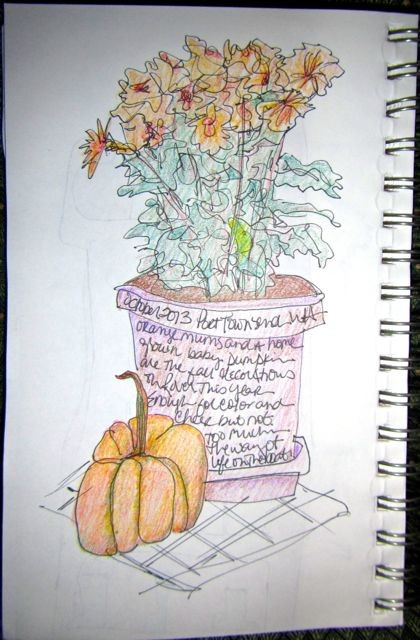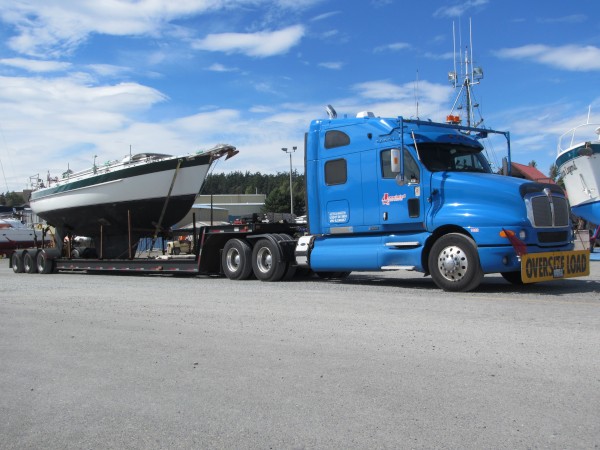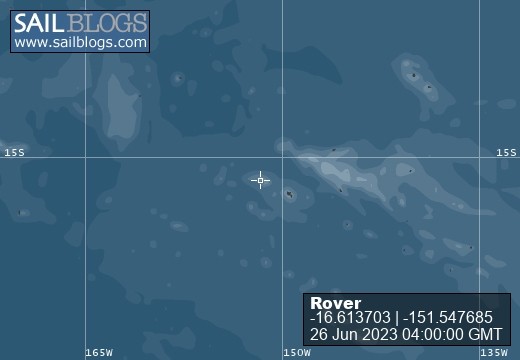
Rover
31 October 2023
30 October 2023
30 October 2023
27 October 2023
26 October 2023
25 October 2023
24 October 2023
23 October 2023
21 October 2023
19 October 2023
18 October 2023
17 October 2023
15 October 2023
11 October 2023
07 October 2023
05 October 2023
04 October 2023
03 October 2023
02 October 2023
01 October 2023
Assistant Engineer (again) then Deckhand on the Robert C Seamans
13 August 2018 | Pago Pago, American Samoa
Eric
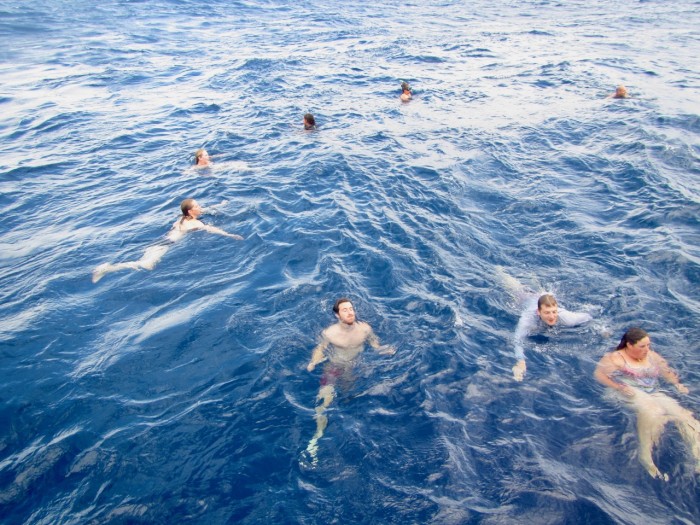
In previous blog posts I’ve written about my experiences on the Hawaiian Chieftain and the Robert C Seamans.
In the winter of 2018 I was offered an assistant engineer position on the Seamans for a cruise from New Zealand to Tahiti. Unfortunately, I injured my knee and was forced to cancel the trip. The summer of 2018 was full of family weddings, with sparse opportunities for cruising. As the season was slipping away, I managed to line up another contract as an assistant engineer on the Seamans for the dockyard period in Pago Pago, American Samoa.
The dockyard period was similar to the one I described in a previous blog. Some learning about various shipboard systems I hadn’t had to maintain previously. We had weekends and evenings mostly free, so there was time to explore the islands and meet some of the locals. I learned less than the first trip, but I did meet some new and interesting people and it was fun. Unfortunately, we stayed tied to the dock
Towards the end of the trip, an opportunity came up to stay on for an extra week as a deckhand. I jumped at the chance.
The primary mission of the Seamans is a Semester at Sea program for undergraduates mostly studying Oceanography and Marine Science. The Sea Education Association (SEA, owners of the Seamans) also occasionally do shorter MBA leadership programs with the Wharton School of Business. Through that connection, SEA worked with the Wharton Executive Leadership School to create a one week expedition for executives of an insurance company. The idea was a combination of Expedition Leadership Training and a series of group discussions on restructuring their company for the future. Kind of a boondoggle with extra pressure. The crew were supposed to help the executives stay safe (but stressed) while they were learning in a completely new environment and also doing the standard corporate offsite stuff for a couple of hours a day.
The program was put together by a couple of people from SEA, a person from the insurance company and three facilitators from the Wharton Expedition Leadership organization. The facilitators were mountain climbers and usually do this type of thing while climbing mountains. Sailing the ship was supposed to substitute for climbing a mountain. The facilitators had never been on tall ships, so they arrived a couple of days early to finalize the program. There ensued a couple of days of earnest discussions about values and objectives (corporate déjà vu for me) and minimal training in tall ships for the facilitators. In our spare time, the crew got the ship ready for a week offshore. The executives finally showed up and came aboard. There were 20 middle aged executives in various degrees of fitness. it’s a Japanese insurance company, so many of the executives were Japanese, but most of the people came from all over the world. A couple had some sailing experience, none had tall ship experience. The group was split into three watches. Each watch got a mate, a deckhand and a scientist form the ships’ company along with a facilitator from Wharton and about 6 insurance executives. We got the ship off the dock and anchored in the harbor to do some safety training and let all hands get used to the motion.
Like climbing a mountain, we needed an ambitious goal. It was decided that we’d sail to Manua island, doing science (the normal mission of the ship) at a couple of seamounts along the way. To increase the degree of difficulty Manua was dead upwind (tradewinds blow from the east in American Samoa), and we’d leave the engine turned off.
The crew stood anchor watches overnight in the harbor, then we had breakfast, set the watches, raised anchor and headed out. In the lee of Tutuilla (the main Island of American Samoa) the wind was Force 5 so we set sail (three lowers with a reefed main). It was a glorious day and everybody on deck was cheered by the call of “whale ho”. As we passed out of the lee of the island, the wind continued to build to Force 6 (20 knots) and the seas also began to build (to 8-10 ft). We’d issued seasickness meds, but they’re marginally effective and pretty soon the lee rail was full of sufferers. The cook and the assistant cook were both prone to seasickness. It was the assistant’s first trip, but the cook was experienced and knew he’d be sick for the first three days, so he’d prepared in advance. Nonetheless, those of us who could eat, found the pickings slim.
We were doing a Swedish watch schedule. It’s a complicated rotating scheme that features longer watches during the day. My first watch was at 7 pm, so after seeing the whales I went for a nap, and I was wakened 20 minutes before my watch. I grabbed dinner, foulies, headlamp and harness then came on deck. One of the “students” was designated the Junior Officer of the Deck (JOD), and got to practice leadership under the watchful eye of the mate of our watch. He had to allocate the tasks and make sure they got done on schedule. There needed to be a lookout and a helmsman at all times. The balance of the watch would cover hourly position observations and an hourly boat check, with a rotation among all the tasks. The watch would also be responsible for a science observation if one was scheduled during their watch, sail handling as necessary and waking the relieving watch. The scientist and I would train the “students” on the various tasks, while the mate retained overall responsibility.
As an experienced engineer, I was asked to train the students on boat checks. The checks include looking at every space in the boat, and checking and recording data from various gauges in the engine room. The engineering spaces consist of three spaces at the bottom of the boat, separated by watertight doors. The control room is the furthest aft, with various control panels and some windows into the engine room. There are no windows outside, but it’s well ventilated and not too loud. The engine room has the main engine and two 20kvA generators in sound enclosures and the fuel tanks. At least one generator runs continuously, so it’s very hot and noisy, despite the sound enclosures. Well over 100dBA, and usually 110 degrees. It smells like an engine room. After passing a corridor between the main fuel tanks, there is a watertight door to the forward machinery space. That space has the refrigeration, sewage plant, watermaker, etc. It’s about 5 and a half feet tall, so stooping is required. With some narrow catwalks to traverse by duckwalking or crawling. It’s also pretty hot and noisy underway. All these spaces are painted white, and bright lights are kept on all the time.
Seasickness is caused by a disconnect between the brain’s expectations of motion and what the body feels. If you’re on deck and can see the horizon, that helps to overcome seasickness. When you go below, the spaces seem “fixed” while the inner ear sends a message of motion, and the conflict between the two intensifies any tendencies toward seasickness. If the space is hot, noisy and smelly like an engine room underway, and you have to concentrate on reading and recording instruments seasickness becomes even more likely.
In our four-hour watch, I attempted to take four students through the engineering space to do boat checks. These were the ones that weren’t too sick on deck to even attempt it. Of the four, one didn’t make it into the control room, the other three didn’t make it past the door into the engine room. I’d emphasized that it was very bad to get sick in the engineering spaces, and luckily all four made it back on deck in time. I did all the boat checks on that watch.
As the days went on, we cycled through our watches. Most of the students started feeling better after a day or two, and the cooks also recovered. The wind picked up and the seas remained high enough to keep the motion “lively”. The night watches featured squalls, and we did some science deployments.
We didn’t make very good progress on sailing to weather. Although we could point into the weather about 50 degrees, the shape of the hull resulted in significant leeway, and we could only make good about 70 degrees. We also couldn’t push through a tack very well, especially with inexperienced crew, so we’d jibe, which cost us distance toward our destination. Looking at the chart and chart-plotter, it looked like several weeks or a change in wind (unlikely in the tradewind area) would be required to get to Manua.
The real objective was to build teamwork among the executives in a stressful situation. It was plenty stressful for them, and fairly stressful for the crew trying to get them up to speed and keep them safe. Nobody got hurt, and I assume their teamwork improved. After three days beating into the wind, less than half way to Manua, we changed the objective to getting safely back to the harbor in time for the executives to catch their planes home. When, we turned off the wind, the motion eased considerably, and the seasickness diminished considerably. We made good progress on a broad reach to the lee of the island, and made it in time for a swim call at sea. We hove-to, deployed the rescue boat, trailed some lines and many people jumped in. It was pretty magical swimming in the deep blue, until we noticed that even hove-to, the boat was drifting away almost as fast as I could swim. A hard effort was required to get back to a trailing line and the rope ladder up the side of the boat.
We made it back into the harbor, relieved the watches and went to our positions on the station bill. Luckily, my station was as the designated helmsman, so I got to drive the ship (under command of the Captain) through the harbor and back to the dock.
After we tied up, the executives went ashore for an extended debriefing, and the crew turned to cleaning up the ship. That evening, the crew met the executives at their hotel bar for a fun evening where the crew couldn’t buy ourselves a drink. The executives were pretty glad to be alive and ashore, and expressed their gratitude by buying drinks for the crew who had helped them.
Overall it was a great experience. I learned more in 5 days at sea than in 5 weeks ashore. The biggest thing I learned was that it’s hard to go to weather in a tall ship under sail.
photo: swim call in the deep blue
In the winter of 2018 I was offered an assistant engineer position on the Seamans for a cruise from New Zealand to Tahiti. Unfortunately, I injured my knee and was forced to cancel the trip. The summer of 2018 was full of family weddings, with sparse opportunities for cruising. As the season was slipping away, I managed to line up another contract as an assistant engineer on the Seamans for the dockyard period in Pago Pago, American Samoa.
The dockyard period was similar to the one I described in a previous blog. Some learning about various shipboard systems I hadn’t had to maintain previously. We had weekends and evenings mostly free, so there was time to explore the islands and meet some of the locals. I learned less than the first trip, but I did meet some new and interesting people and it was fun. Unfortunately, we stayed tied to the dock
Towards the end of the trip, an opportunity came up to stay on for an extra week as a deckhand. I jumped at the chance.
The primary mission of the Seamans is a Semester at Sea program for undergraduates mostly studying Oceanography and Marine Science. The Sea Education Association (SEA, owners of the Seamans) also occasionally do shorter MBA leadership programs with the Wharton School of Business. Through that connection, SEA worked with the Wharton Executive Leadership School to create a one week expedition for executives of an insurance company. The idea was a combination of Expedition Leadership Training and a series of group discussions on restructuring their company for the future. Kind of a boondoggle with extra pressure. The crew were supposed to help the executives stay safe (but stressed) while they were learning in a completely new environment and also doing the standard corporate offsite stuff for a couple of hours a day.
The program was put together by a couple of people from SEA, a person from the insurance company and three facilitators from the Wharton Expedition Leadership organization. The facilitators were mountain climbers and usually do this type of thing while climbing mountains. Sailing the ship was supposed to substitute for climbing a mountain. The facilitators had never been on tall ships, so they arrived a couple of days early to finalize the program. There ensued a couple of days of earnest discussions about values and objectives (corporate déjà vu for me) and minimal training in tall ships for the facilitators. In our spare time, the crew got the ship ready for a week offshore. The executives finally showed up and came aboard. There were 20 middle aged executives in various degrees of fitness. it’s a Japanese insurance company, so many of the executives were Japanese, but most of the people came from all over the world. A couple had some sailing experience, none had tall ship experience. The group was split into three watches. Each watch got a mate, a deckhand and a scientist form the ships’ company along with a facilitator from Wharton and about 6 insurance executives. We got the ship off the dock and anchored in the harbor to do some safety training and let all hands get used to the motion.
Like climbing a mountain, we needed an ambitious goal. It was decided that we’d sail to Manua island, doing science (the normal mission of the ship) at a couple of seamounts along the way. To increase the degree of difficulty Manua was dead upwind (tradewinds blow from the east in American Samoa), and we’d leave the engine turned off.
The crew stood anchor watches overnight in the harbor, then we had breakfast, set the watches, raised anchor and headed out. In the lee of Tutuilla (the main Island of American Samoa) the wind was Force 5 so we set sail (three lowers with a reefed main). It was a glorious day and everybody on deck was cheered by the call of “whale ho”. As we passed out of the lee of the island, the wind continued to build to Force 6 (20 knots) and the seas also began to build (to 8-10 ft). We’d issued seasickness meds, but they’re marginally effective and pretty soon the lee rail was full of sufferers. The cook and the assistant cook were both prone to seasickness. It was the assistant’s first trip, but the cook was experienced and knew he’d be sick for the first three days, so he’d prepared in advance. Nonetheless, those of us who could eat, found the pickings slim.
We were doing a Swedish watch schedule. It’s a complicated rotating scheme that features longer watches during the day. My first watch was at 7 pm, so after seeing the whales I went for a nap, and I was wakened 20 minutes before my watch. I grabbed dinner, foulies, headlamp and harness then came on deck. One of the “students” was designated the Junior Officer of the Deck (JOD), and got to practice leadership under the watchful eye of the mate of our watch. He had to allocate the tasks and make sure they got done on schedule. There needed to be a lookout and a helmsman at all times. The balance of the watch would cover hourly position observations and an hourly boat check, with a rotation among all the tasks. The watch would also be responsible for a science observation if one was scheduled during their watch, sail handling as necessary and waking the relieving watch. The scientist and I would train the “students” on the various tasks, while the mate retained overall responsibility.
As an experienced engineer, I was asked to train the students on boat checks. The checks include looking at every space in the boat, and checking and recording data from various gauges in the engine room. The engineering spaces consist of three spaces at the bottom of the boat, separated by watertight doors. The control room is the furthest aft, with various control panels and some windows into the engine room. There are no windows outside, but it’s well ventilated and not too loud. The engine room has the main engine and two 20kvA generators in sound enclosures and the fuel tanks. At least one generator runs continuously, so it’s very hot and noisy, despite the sound enclosures. Well over 100dBA, and usually 110 degrees. It smells like an engine room. After passing a corridor between the main fuel tanks, there is a watertight door to the forward machinery space. That space has the refrigeration, sewage plant, watermaker, etc. It’s about 5 and a half feet tall, so stooping is required. With some narrow catwalks to traverse by duckwalking or crawling. It’s also pretty hot and noisy underway. All these spaces are painted white, and bright lights are kept on all the time.
Seasickness is caused by a disconnect between the brain’s expectations of motion and what the body feels. If you’re on deck and can see the horizon, that helps to overcome seasickness. When you go below, the spaces seem “fixed” while the inner ear sends a message of motion, and the conflict between the two intensifies any tendencies toward seasickness. If the space is hot, noisy and smelly like an engine room underway, and you have to concentrate on reading and recording instruments seasickness becomes even more likely.
In our four-hour watch, I attempted to take four students through the engineering space to do boat checks. These were the ones that weren’t too sick on deck to even attempt it. Of the four, one didn’t make it into the control room, the other three didn’t make it past the door into the engine room. I’d emphasized that it was very bad to get sick in the engineering spaces, and luckily all four made it back on deck in time. I did all the boat checks on that watch.
As the days went on, we cycled through our watches. Most of the students started feeling better after a day or two, and the cooks also recovered. The wind picked up and the seas remained high enough to keep the motion “lively”. The night watches featured squalls, and we did some science deployments.
We didn’t make very good progress on sailing to weather. Although we could point into the weather about 50 degrees, the shape of the hull resulted in significant leeway, and we could only make good about 70 degrees. We also couldn’t push through a tack very well, especially with inexperienced crew, so we’d jibe, which cost us distance toward our destination. Looking at the chart and chart-plotter, it looked like several weeks or a change in wind (unlikely in the tradewind area) would be required to get to Manua.
The real objective was to build teamwork among the executives in a stressful situation. It was plenty stressful for them, and fairly stressful for the crew trying to get them up to speed and keep them safe. Nobody got hurt, and I assume their teamwork improved. After three days beating into the wind, less than half way to Manua, we changed the objective to getting safely back to the harbor in time for the executives to catch their planes home. When, we turned off the wind, the motion eased considerably, and the seasickness diminished considerably. We made good progress on a broad reach to the lee of the island, and made it in time for a swim call at sea. We hove-to, deployed the rescue boat, trailed some lines and many people jumped in. It was pretty magical swimming in the deep blue, until we noticed that even hove-to, the boat was drifting away almost as fast as I could swim. A hard effort was required to get back to a trailing line and the rope ladder up the side of the boat.
We made it back into the harbor, relieved the watches and went to our positions on the station bill. Luckily, my station was as the designated helmsman, so I got to drive the ship (under command of the Captain) through the harbor and back to the dock.
After we tied up, the executives went ashore for an extended debriefing, and the crew turned to cleaning up the ship. That evening, the crew met the executives at their hotel bar for a fun evening where the crew couldn’t buy ourselves a drink. The executives were pretty glad to be alive and ashore, and expressed their gratitude by buying drinks for the crew who had helped them.
Overall it was a great experience. I learned more in 5 days at sea than in 5 weeks ashore. The biggest thing I learned was that it’s hard to go to weather in a tall ship under sail.
photo: swim call in the deep blue
Comments
| Vessel Name: | Rover |
| Vessel Make/Model: | Valiant 42 |
| Hailing Port: | Seattle. WA |
| Crew: | Eric and Linda |
| About: | |
| Extra: | Linda was barrel master and Eric participated in the Jackson Street Vintners; a group of friends that made wine from 2000 to 2013 |
Rover
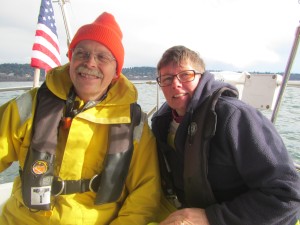
Who: Eric and Linda
Port: Seattle. WA

